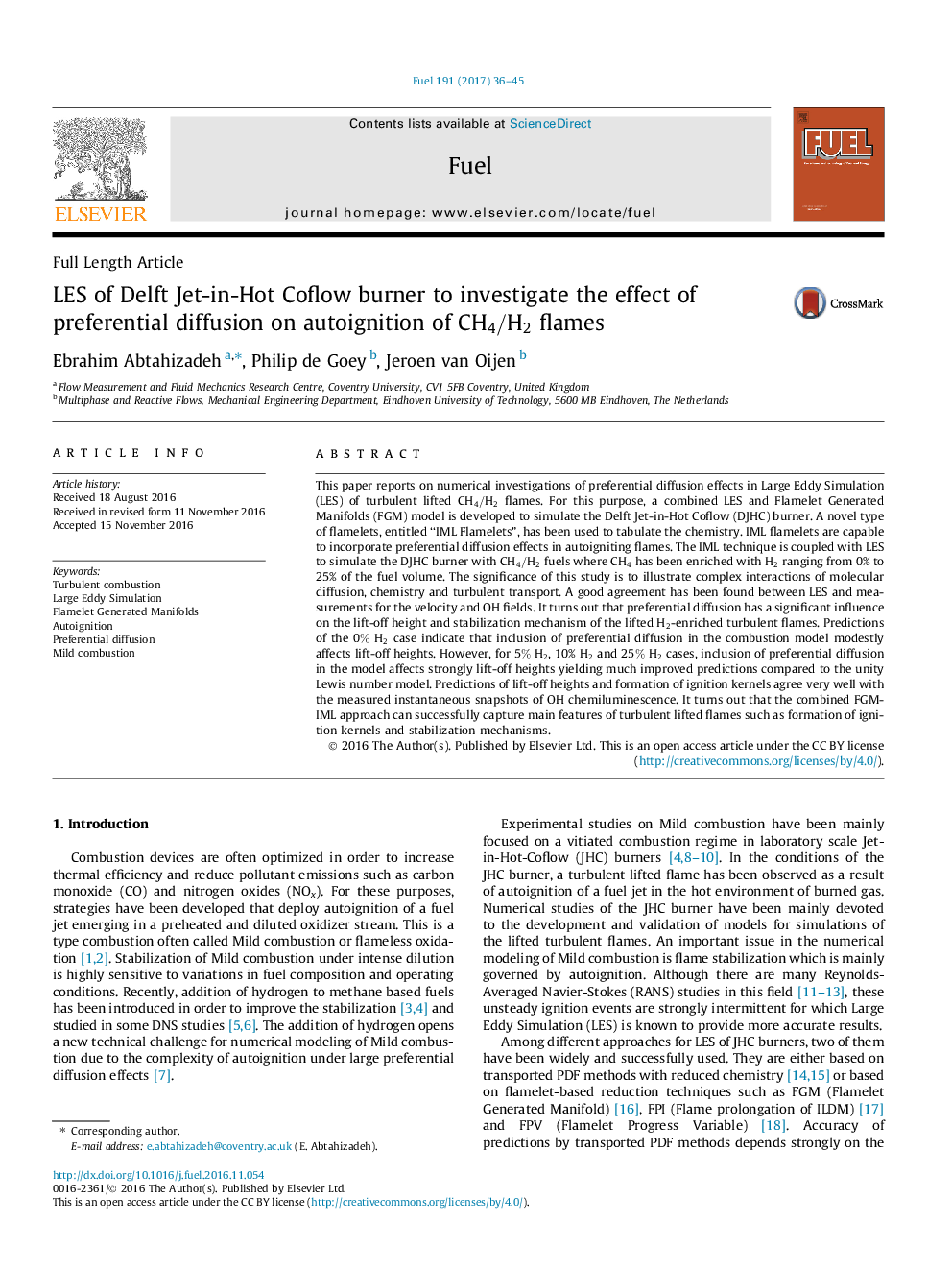| Article ID | Journal | Published Year | Pages | File Type |
|---|---|---|---|---|
| 4768747 | Fuel | 2017 | 10 Pages |
Abstract
This paper reports on numerical investigations of preferential diffusion effects in Large Eddy Simulation (LES) of turbulent lifted CH4/H2 flames. For this purpose, a combined LES and Flamelet Generated Manifolds (FGM) model is developed to simulate the Delft Jet-in-Hot Coflow (DJHC) burner. A novel type of flamelets, entitled “IML Flamelets”, has been used to tabulate the chemistry. IML flamelets are capable to incorporate preferential diffusion effects in autoigniting flames. The IML technique is coupled with LES to simulate the DJHC burner with CH4/H2 fuels where CH4 has been enriched with H2 ranging from 0% to 25% of the fuel volume. The significance of this study is to illustrate complex interactions of molecular diffusion, chemistry and turbulent transport. A good agreement has been found between LES and measurements for the velocity and OH fields. It turns out that preferential diffusion has a significant influence on the lift-off height and stabilization mechanism of the lifted H2-enriched turbulent flames. Predictions of the 0% H2 case indicate that inclusion of preferential diffusion in the combustion model modestly affects lift-off heights. However, for 5% H2, 10% H2 and 25% H2 cases, inclusion of preferential diffusion in the model affects strongly lift-off heights yielding much improved predictions compared to the unity Lewis number model. Predictions of lift-off heights and formation of ignition kernels agree very well with the measured instantaneous snapshots of OH chemiluminescence. It turns out that the combined FGM-IML approach can successfully capture main features of turbulent lifted flames such as formation of ignition kernels and stabilization mechanisms.
Keywords
Related Topics
Physical Sciences and Engineering
Chemical Engineering
Chemical Engineering (General)
Authors
Ebrahim Abtahizadeh, Philip de Goey, Jeroen van Oijen,
